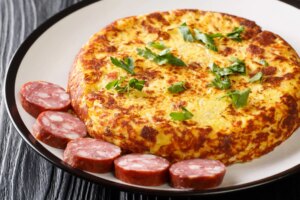Many of Luxembourg’s traditional foods reflect the Grand Duchy’s farming heritage and location between Germany, France, and Belgium. For instance, you will discover that the country’s cuisine combines rustic German heartiness, French finesse, and a little Iberian flavor for good measure. Often incorporating meat, fish, potatoes, dashes of cream, and wine, however, Luxembourg’s top dishes certainly aren’t for those on a diet. But if you do fancy a hearty and flavorsome meal, why not delve into one of these delicious Luxembourg foods which you can easily make at home. Lecker!
HelloFresh
Explore Luxembourg with your tastebuds by bringing restaurant-quality food into the comfort of your own home. HelloFresh provides fresh and innovative recipe boxes direct to your front door. Choose from a wide range of colorful meals from Luxembourg and beyond that are perfect for taking your meals to the next level. Get more from mealtime with HelloFresh.
1. Bouneschlupp
It might not look overly appetizing but this thick soup consisting of green beans, potatoes, and bacon is one of Luxembourg’s most cherished dishes. Depending on where you are, the recipe will sometimes include carrots, leeks, celery, onions, milk, and cream. Some people serve it with potato pancakes, too. Another popular potato-based soup in Luxembourg is Gromperenzopp, which is served in a deep bowl and topped with slices of sausage or bacon, or with fresh parsley or fried onion.
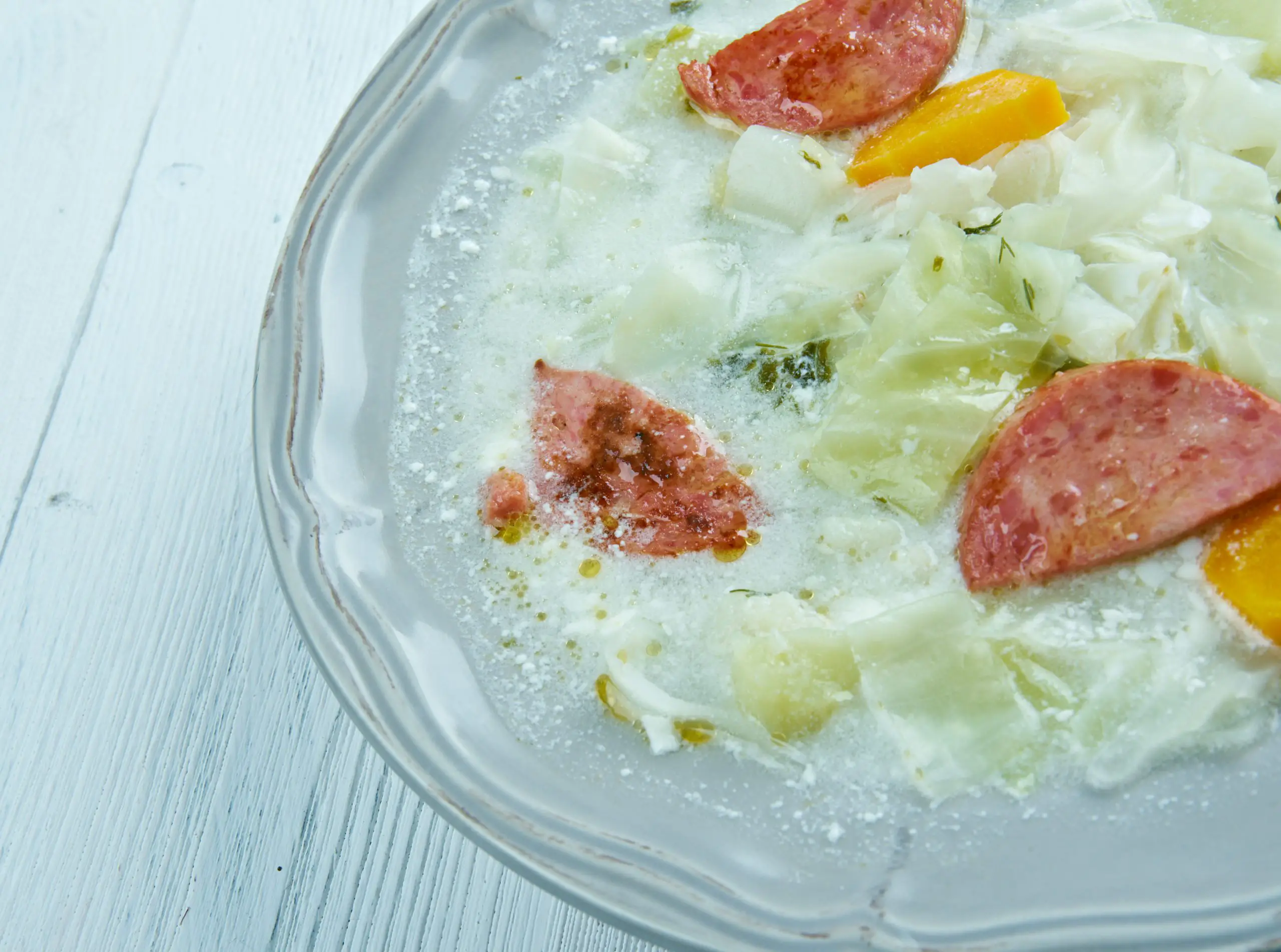
Make your own Bouneschlupp
- Try this super easy recipe for Bouneschlupp
- Try this miso-based recipe that has a Japanese twist
2. F’rell Am Rèisleck
Luxembourg has no access to the sea. As a result, traditional fish dishes are based on what swims in freshwater rather than in the sea. Trout, pike, and crayfish are some of the most common fish that you will find in Luxembourg’s restaurants. F’rell Am Rèisleck is one of the most popular dishes and is made by frying trout in melted butter before covering it with a mixture of Riesling wine, crème fraîche, shallots, and spices and herbs, then baking it to perfection. People typically enjoy the dish as a main course with a side of potato fritters or steamed potatoes and garnished with freshly chopped parsley on top.

Make your own F’rell Am Rèisleck
- Try this simple recipe for F’rell Am Rèisleck
- Alternatively, check out this recipe for trout in Riesling sauce
- You can print this recipe and pin it to your fridge
3. Friture de la Moselle
Originating from the wine-growing Moselle region of Luxembourg, Friture de la Moselle is a fried fish dish that is people traditionally eat with fingers. Different kinds of small freshwater fish are cleaned and gutted (or left whole if the fish are tiny) and then seasoned with salt and pepper. They are then dipped first into lemon juice and then into a flour and egg batter before deep frying. The fish comes with wedges of lemon to squeeze over the fish before you eat it. Simple and delicious, it’s no wonder this is some of the most popular food in Luxembourg.

Make your own Friture de la Moselle
- Try making it at home with this simple recipe
- Follow this tasty recipe along with others from Luxembourg
- Test your French skills with this fun recipe video
4. Gromperekichelcher
These delicious crispy fried potato cakes or fritters are one of the most popular foods in Luxembourg. As a result, you will find them on sale at markets and fairs almost everywhere throughout the country. They are made by mixing grated potatoes, chopped onions, parsley, egg, flour, and salt, which are then shaped into flattened patties and fried. People tend to enjoy them best when eaten piping hot straight from the pan. Depending on preference, some people like to eat them with tomato ketchup or apple sauce. Others, meanwhile, enjoy eating them with soup.
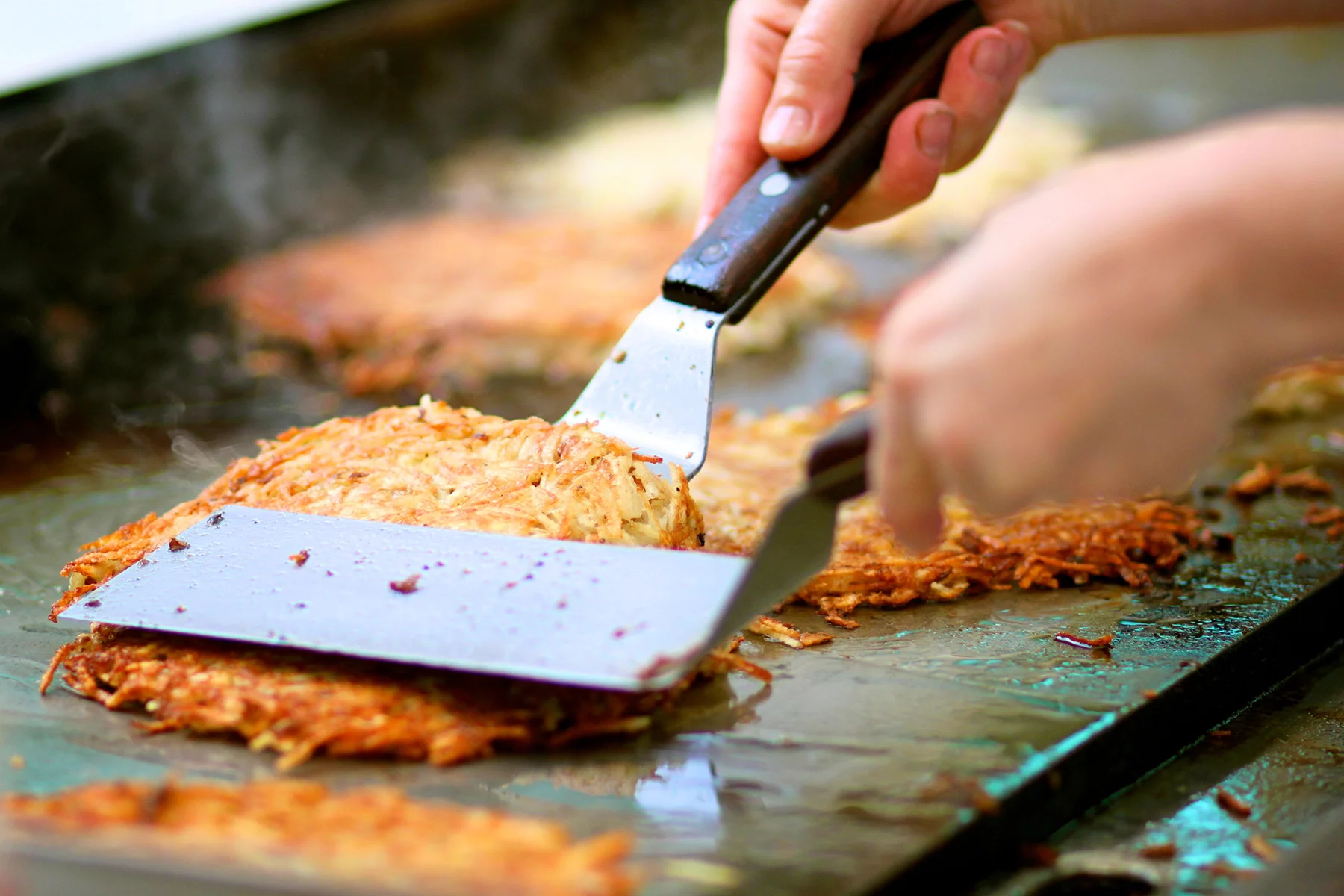
Make your own Gromperekichelcher
- Try this simple recipe for 10 people
- This step-by-step recipe with photos will make you drool!
- Make them yourself with this helpful recipe video
5. Huesenziwwi
During the game season in Luxembourg, which runs from October to December, you might find Huesenziwwi on the menus of some top restaurants in Luxembourg. It consists of marinated pieces of hare cooked with wine and onions in a thick sauce made from hare or calf’s blood, red wine, and cognac. Some people like to add sour cream, mushrooms, carrots, and herbs into the mix too. This might include sage, bay leaves, and thyme. The stew is extremely tender on account of the hare being marinated between 48 and 72 hours before being fried in lard and flambéed with cognac. People often serve it with noodles, cabbage, and a glass of wine.

Make your own Huesenziwwi
- Give this detailed recipe a go
Allianz Care
Moving country doesn’t just mean a change of scene – your diet usually changes, too. Trying new recipes, dining out, and experiencing another country’s cuisine is exciting, but what about your digestive system? Read Allianz Care’s report on their Expat gut health survey to understand how moving abroad affects nutrition.
6. Judd mat Gaardebounen
Some say that Judd mat Gaardebounen is the national food of Luxembourg. The hefty and heart-warming dish consists of smoked and salted pork (Judd) with broad beans (Gaardebounen). To make it, smoked pork neck (sometimes called collar) is soaked overnight in water. The next day, it is placed in a pot with vegetables and spices such as bay leaves and cloves. It then cooks over low heat for several hours until it is tender. When it’s ready, the pork is cut into thick slices and placed on a bed of creamy sauce of broad beans and potatoes. Usually, people boil the potatoes or fry them with bacon. If you order this dish in a restaurant in Luxembourg, make sure you arrive with a large appetite as portions are usually huge.
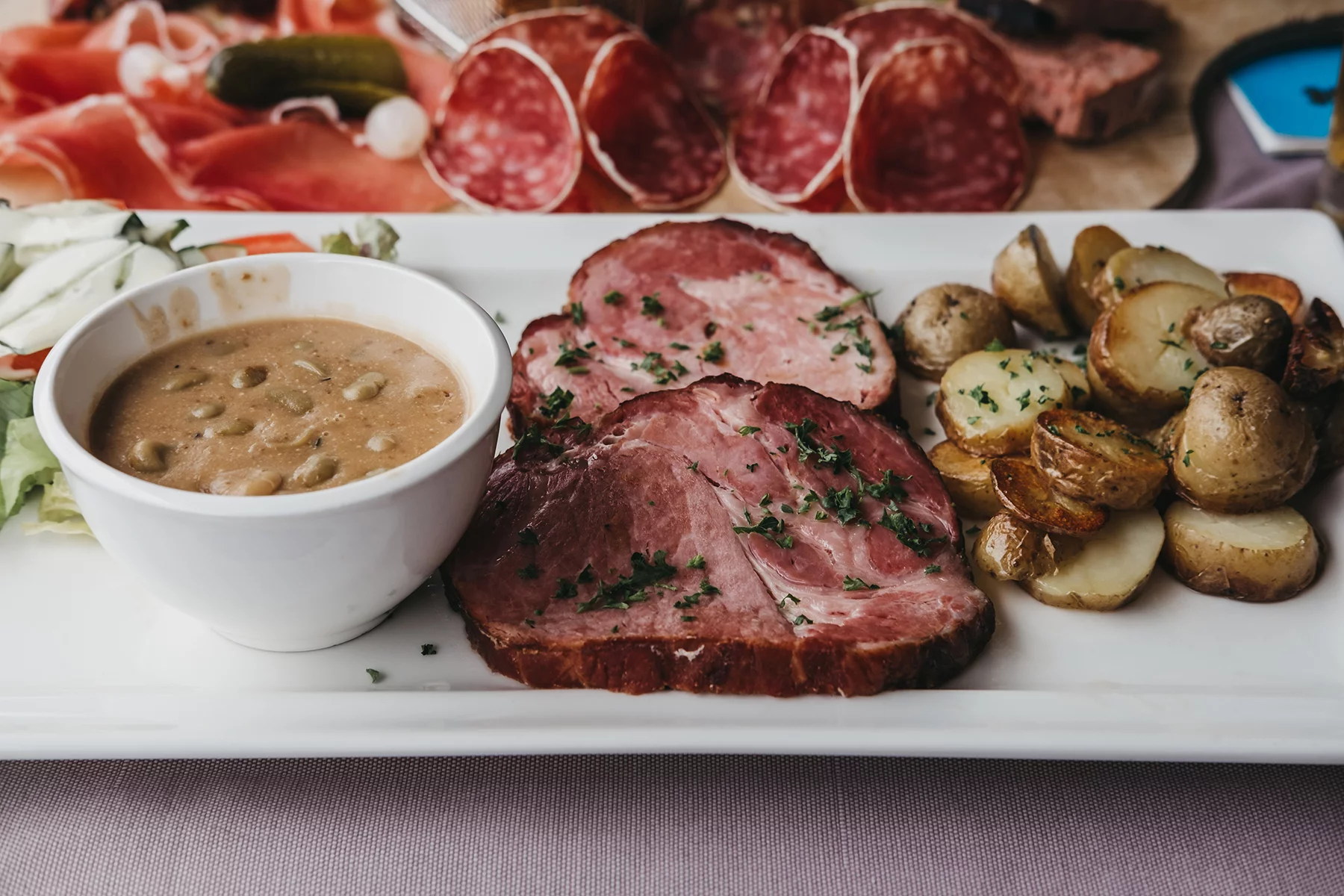
Make your own Judd mat Gaardebounen
- Print this tasty recipe and give it a whirl
- This recipe with photos is useful to try
- Try this recipe that uses cannelloni to add an Italian twist
7. Kuddelfleck and other offal dishes
In the past, no part of an animal went to waste in Luxembourg. Essentially, this rule still stands today and as a result, you will find many different offal dishes on menus across the country. Some traditional dishes include Liewe Kniddelen mat Sauerkraut (liver meatballs and sauerkraut); Traipen (black pudding made from pork head, lungs, kidney, and tongue mixed with cabbage and bread); and Kuddelfleck (tripe coated in breadcrumbs and fried). Waste not, want not, right? This country seems to think so.

Make your own Kuddelfleck
- Check out this recipe for Kuddelfleck (Luxembourg tripe)
- Print this easy recipe and cook Kniddelen at home
- Watch this recipe video for Kniddelen mat Speck (dumplings with bacon)
8. Paschtéit or Bouchée à la Reine
Paschtéit or Bouchée à la Reine are puffy, large pastry cases that are filled with chicken and mushroom, and mixed together with a creamy or béchamel sauce. The case and contents are actually cooked separately. You typically make the pastry by cutting two circles in rolled-out puff pastry, cutting a hole in one of them, then stacking the ring-shaped piece on top of the disc-shaped piece. You then cook it and fill it with a variety of sweet or savory fillings, before popping a little pastry lid on top. Bouchée à la Reine is traditionally a classic French starter for a special celebration, however, some people in Luxembourg enjoy it as a main dish.
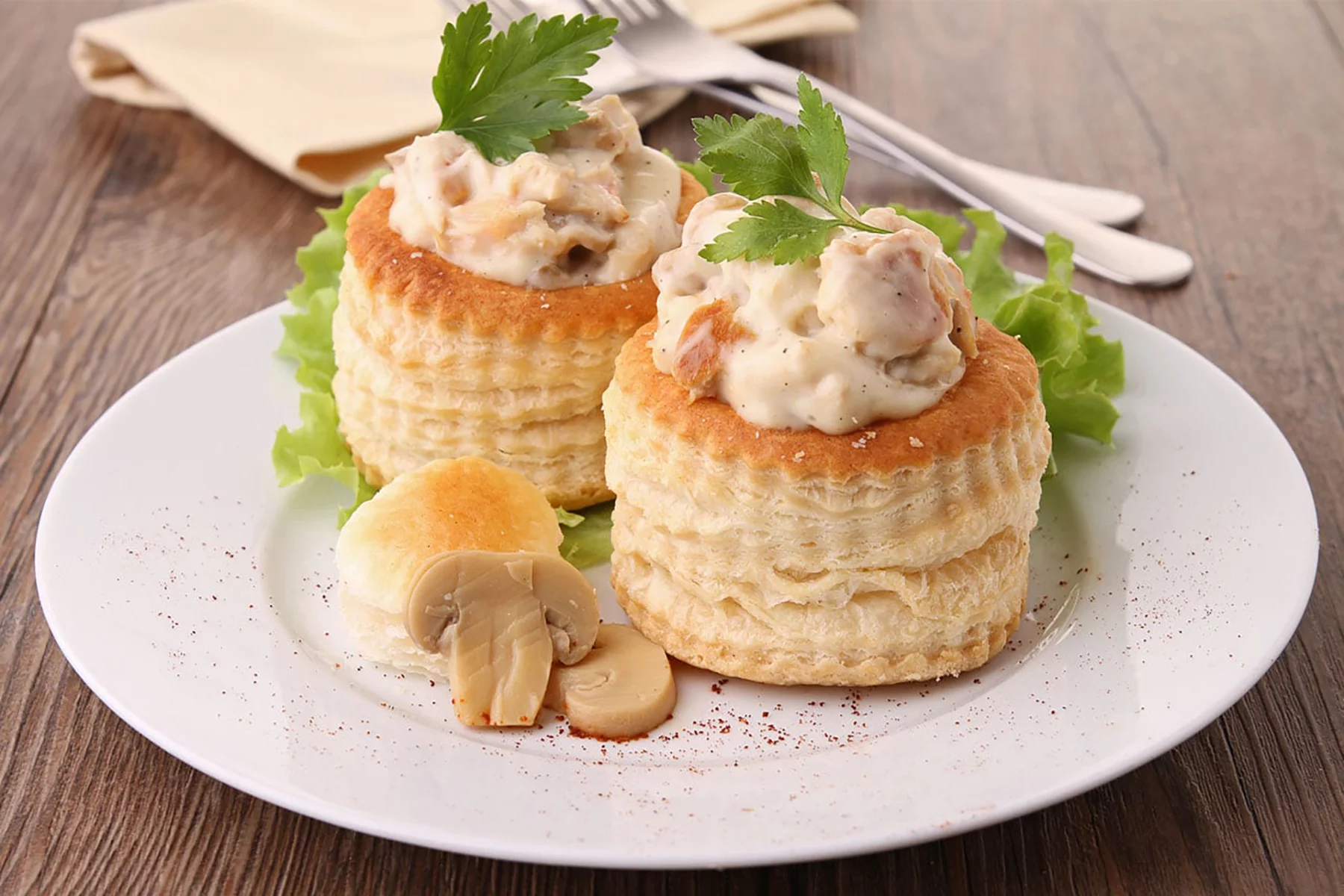
Make your own Paschtéit
- Practice this simple recipe for six people
- Or try this helpful recipe with step-by-step photos
- Learn about the origin of this adorable dish
9. Rieslingspaschteit or Pâté au Riesling
Many people in Luxembourg consider this delicious and hearty meat pie as a culinary treasure. Pâté is a common paste made from meat which is spread on bread and often eaten with pickle. Rieslingspaschteit or Pâté au Riesling, however, is made by encasing a coarse pork pâté or terrine in a Riesling-flavored aspic and then baked in pastry to create a log-shaped meat pie. Rieslingspaschteit is seen as the queen of pies in Luxembourg and a popular culinary tradition. As a result, you will find them in practically every bakery across the country. People usually serve the pie cold and sliced and, preferably, with a nice glass of Riesling.
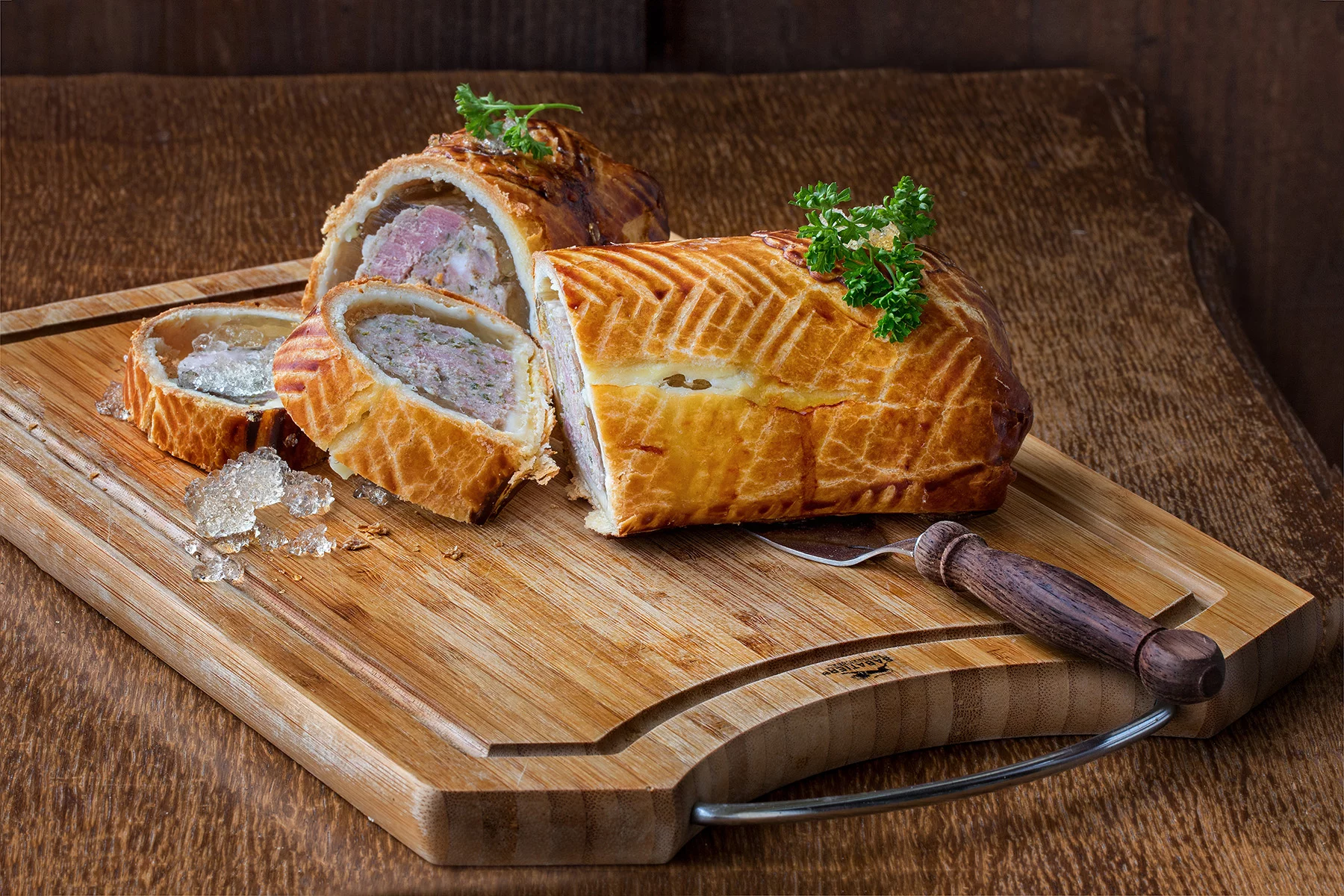
Make your own Rieslingspaschteit
- Follow this printable BBC recipe for Rieslingspaschteit
- This simple recipe is easy to follow too
- Add a Thai twist with this recipe that uses sweet chili sauce and lemongrass
10. Quetschentaart
If you have a sweet tooth, you will no doubt enjoy delving into this delicious open plum tart. You will find Quetschentaart in bakeries all over Luxembourg in the autumn; after the fruit has ripened and been harvested. It is traditionally made with a type of plum called a damson. These are stoned, halved, and then put into a sweet pastry dough base before being baked in the oven. As a finishing touch, the tart is covered with halved plums that are arranged in circles and served with sprinkled sugar on top.
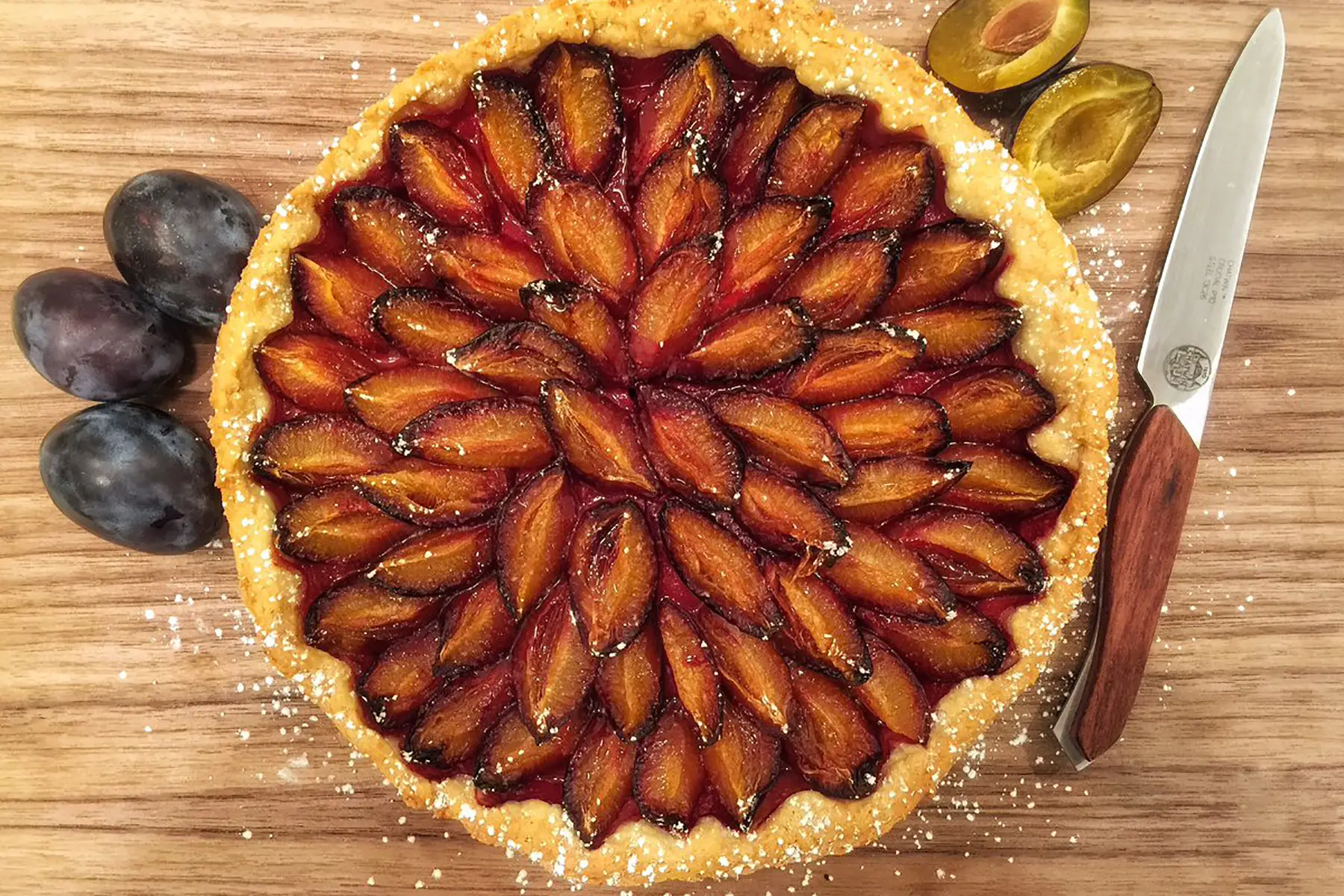
Make your own Quetschentaart
- Follow this simple but delicious recipe for Quetschentaart
- Print this recipe and give it a whirl
- This mouth-watering recipe comes with a big dollop of crème fraîche
Now that you’ve learned about some of the culinary delights of Luxembourg (and how to make them!), you may be wondering how moving abroad affects your digestive health. According to the Allianz Care Expat gut health survey report, many internationals find they need to adapt to eating out more, cooking less, and trying new ingredients. These changes can lead to digestion issues and increased gut-related symptoms.
The survey, which took responses from 3,000 expats of several different nationalities and resident countries, revealed that 77% reported a negative impact on their daily lives due to digestive symptoms. Additionally, expats often eat more processed and convenience food than in their home country, and find it difficult to source familiar ingredients. The insights in the report can help you enjoy your new country’s cuisine while maintaining a healthy digestive system.


